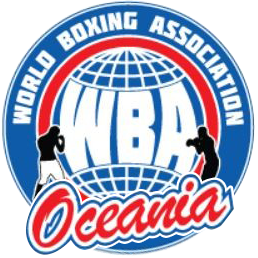It was the first of three legendary wars that defined an era, staged inside a 20-foot ring, raised just four feet above the canvas. But this was more than just a fight—it was a seismic clash of ideologies, personalities, and raw physical will. On March 8, 1971, the eyes of the world turned to Madison Square Garden, the boxing mecca of New York City, where two of the most iconic heavyweights of all time collided in a battle that still echoes through the annals of history.
In one corner stood the man who called himself The Greatest, Muhammad Ali—formerly Cassius Clay—a dazzling, fast-talking, poetic warrior who had become a global symbol of defiance. In the opposite corner, his bitter rival, Joe “Smoking” Frazier, the relentless, blue-collar brawler whose left hook had become the stuff of nightmares. Both undefeated. Both Olympic gold medalists. Both world champions. And both on a collision course for destiny.
THE CONTROVERSY BEHIND ALI
Ali’s road to this fight was anything but smooth. Seven years earlier, in February 1964, he had shocked the world by dismantling Sonny Liston to claim the WBA and WBC heavyweight titles. A year later, he knocked Liston out in one round to erase any doubts. But his reign was cut short—not in the ring, but in a courtroom.
Ali’s ties to the Nation of Islam and his refusal to be drafted into the Vietnam War made him a polarizing figure. On April 28, 1967, he stood in a Houston induction center and refused to take a single step forward when called. “I have nothing against the Viet Cong,” he famously declared. “No Viet Cong ever called me the N-word.” His defiance cost him everything—his titles, his boxing license, and nearly five years of his prime.
When he finally returned in 1970, Ali had lost some of the physical gifts that made him untouchable in the ’60s. He still had the speed, the showmanship, and the supreme confidence, but the world wanted to know: could he still be The Greatest?
THE FIGHT OF THE CENTURY
This wasn’t just a fight—it was a cultural war.
On one side, Frazier, the “good Black man,” as he was painted by conservative white America. He was humble, hardworking, and never questioned authority. On the other, Ali, the defiant, anti-establishment rebel, supported by the civil rights movement and anti-war activists. Ali taunted Frazier mercilessly in the lead-up, calling him “Uncle Tom,” a “gorilla,” and questioning his intelligence. The psychological warfare was relentless, and Frazier took it personally.
When the two finally met under the bright lights of Madison Square Garden, the world stood still. An estimated 300 million people tuned in from theaters, bars, and living rooms across the globe. Even New York City itself felt paralyzed as celebrities packed the arena—Frank Sinatra was shooting photos for Life Magazine, Burt Lancaster provided commentary, and names like Barbra Streisand, Bob Dylan, and Diana Ross filled the ringside seats.
The bell rang, and history unfolded.
Ali controlled the early rounds, his jab snapping with precision, his footwork still mesmerizing. But Frazier kept coming, relentless, pounding Ali’s body with hooks. By the third round, Frazier’s trademark left hook rocked Ali, and the fight transformed into a brutal war of attrition. Round after round, they traded punches at an unrelenting pace, Ali dancing and countering, Frazier stalking and smashing.
By the 15th and final round, both men were battered, exhausted, but unbroken. Then, it happened—Frazier uncorked a left hook from hell, sending Ali crashing to the canvas. The unthinkable. Ali, on the floor. He struggled to his feet, defiant as ever, but the damage was done. The judges scored it unanimously for Frazier—8-6-1, 9-6, and 11-4.
Both men were hospitalized for weeks. But the fight itself became legend. Each fighter pocketed an unprecedented $2.5 million, while promoters raked in over $45 million in global revenue—a staggering sum for the time.
THE AFTERMATH & LEGACY
Three years later, Ali avenged his loss in a non-title bout, winning by decision. Their trilogy ended in 1975 with The Thrilla in Manila, a fight so grueling that Ali later said, “It was the closest thing to dying.”
Ali went on to become the first and only three-time heavyweight champion, his legacy cemented not just in boxing, but in history. He retired in 1981 with a record of 56-5 (37 KOs) but struggled with Parkinson’s disease until his passing in 2016 at age 74.
Frazier, forever linked to Ali in both triumph and torment, retired in 1981 with a record of 32-4-1 (27 KOs). Though he never forgave Ali for the personal insults, their battles secured his place among the greats. He passed away in 2011 from liver cancer at age 67.
The Fight of the Century remains exactly that—an unforgettable night when boxing was more than just a sport. It was history in motion.

















